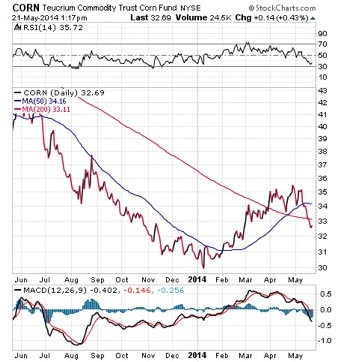ETFs Provide Easy Access To Energy Commodities
Post on: 28 Апрель, 2015 No Comment

If you fill up a car with gasoline or heat a home with oil or natural gas, you know that rising energy costs have put a dent in your budget. But do you also know how easy it is to buy shares in a brokerage account or IRA that can help you hedge energy commodity price increases?
This article will help investors understand the benefits of investing in energy commodity ETFs and detail choices available to interested investors. It specifically covers investments that seek to track commodities prices — not ETFs that invest in energy sector stocks, in which investment returns are influenced by the overall direction of the stock market and do not always mirror energy commodities prices.
Welcome to the World of ETFs
In recent years, thanks to the growth of exchange-traded funds (ETFs), ownership of energy-sector commodities has become more accessible for individuals. For example, buying one share of the U.S. Oil Fund ETF (AMEX:USO) gives you exposure roughly equal to one barrel of oil. If oil prices rise by 10% in a given period, your investment should theoretically appreciate by about the same percentage. You can own oil through this ETF without incurring the cost normally associated with storage or transport. The only costs that you will pay include brokerage fees to buy and sell shares plus a modest ongoing management fee.
USO is not mentioned as a specific investment recommendation. It is significant because it was the first energy commodity ETF introduced, in February of 2006, and remains one of the most popular by asset size and trading volume. Since USO’s introduction, ETF energy commodity choices have greatly expanded.
Why invest in energy commodity ETFs?
ETFs are traded on exchanges (like stocks), and shares may be bought or sold throughout the trading day in large or small amounts.
At the heart of the energy complex is crude oil and products refined from it, such as gasoline and home heating oil. Natural gas is a by-product of oil exploration and a valuable product in its own right, used throughout the world for heat and power generation. Lesser products in the energy complex include coal, kerosene, diesel fuel, propane and emission credits.
Energy commodity ETFs can be useful tools for constructing diversified investment portfolios for the following reasons:
1. Inflation hedge and currency hedge potential — Energy has recognized value all over the world, and this value does not depend on any nation’s economy or currency. Over time, most energy commodities have held their values against inflation very well. For example, the spot price of a barrel of crude oil increased at an average annual rate of 6.5% per year from 1950 through 2007. Over the same span, the annualized increase in the U.S. Consumer Price Index was 3.9%. Energy prices tend to move in the opposite direction of the U.S. dollar — prices increase when the dollar is weak. This makes energy ETFs a sound strategy for hedging against any dollar declines.

2. Participation in global growth — Demand for energy commodities keeps growing in industrializing emerging markets such as China and India. In 2007, as in most years, the U.S. consumed about 25% of the world’s 85 million barrels of total daily oil production, and U.S. consumption has been increasing by about 3% per year, according to the International Energy Agency. Some experts believe that it will be difficult for global oil production to grow in the future due to dwindling reserves, especially in Saudi Arabia. In addition, several of the world’s leading oil export nations (ex. Russia, Iran, Iraq, Venezuela and Nigeria) are politically volatile and could be unreliable as future sources of supply.
3. Portfolio diversification — According to modern portfolio theory, investors can increase portfolio risk-adjusted returns by combining low-correlating assets in which returns do not tend to move in the same direction at the same time. However, few asset classes accessible to individual investors have consistently produced low correlations with U.S. stocks. Correlations are measured on a scale of 1 (perfect correlation) to -1 (perfectly negative correlation). Oil is among the few asset classes that have consistently produced very low (or negative) correlations with U.S. stocks. According to FactSet, the correlation between oil futures and the S&P 500 Index was -0.31 for the five-year period 2002-2007. For this reason, investors can expect oil commodity holdings to help diversify and balance stock-heavy portfolios.
4. Backwardation — Backwardation is the most complex (and least understood) benefit of some energy commodity ETFs. These ETFs place most of their assets in interest-bearing debt instruments (such as short-term U.S. Treasuries), which are used as collateral for buying futures contracts. In most cases, the ETFs hold futures contracts with the least time left to delivery — so-called short-dated contracts. As these contracts approach the delivery date, the ETFs roll into the next shortest-dated contracts.
Most futures contracts typically trade in contango, which means that prices on long-delivery contracts exceed short-term delivery or spot prices. However, oil and gasoline historically have often done the opposite, which is called backwardation. When an ETF systematically rolls backwardated contracts, it can add small increments of return called roll yield, because it is rolling into less expensive contracts. Over time, these small increments add up significantly, especially if backwardation continues.
Although this explanation may sounds highly technical, roll yield historically has been the dominant source of investment return in oil, heating oil and gasoline futures contracts. According to an analysis by author and analyst Hilary Till, long-term annualized returns of these futures contracts exceeded spot prices significantly, as shown in Figure 1, below, and the major reason for this differential was backwardation roll yield.
Annualized Returns from 1983 to 2004














